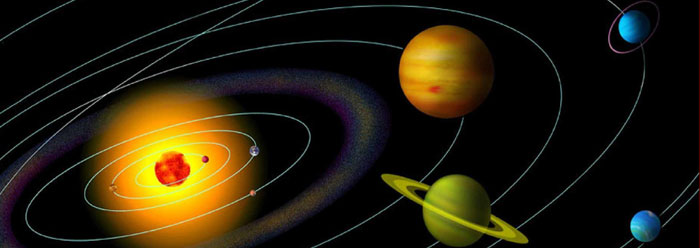New research is shedding surprising light on the uniqueness of our solar system. Over 250 planet-like objects (mostly gas giants) have been observed in distant space, and researchers are curious about how they formed and how they compare with earth and its neighboring planets.
For decades, astronomers have popularized the “nebular hypothesis,” which asserts that planets were formed by the gravitational attraction of dust particles to space rocks. The dust presumably existed in a disk surrounding newly-formed stars. Despite numerous major problems with this theory,1 it is still prominently featured in science textbooks.
If the 8 official solar planets (with their over 130 satellites) and the 250 extrasolar planet-like objects were all formed by dust accretion, it would be logical to assume that they should exhibit similar characteristics. But new research from Northwestern University is finding that extrasolar planets don’t look like our local planets at all.2
Computer modeling studies based on the nebular hypothesis show that the formation of planets like those in our solar system would require a unique series of special parameters to keep them from flying off into space, crashing into the sun, entering extremely elliptical (non-circular) orbits, orbiting so near the sun that their solar year would take only days, or ending up too small to be much more than an asteroid or too large, thus becoming a star.
Why didn’t the planets of our solar system fly off into space? In the study that appears in the August 8, 2008, issue of the journal Science, one Northwestern researcher suggests it could be due to “dynamical friction from the remnant outer planetesimal disk…serving to prevent their ejection and ultimately recircularize their orbits.”3 In other words, leftover space junk supposedly nudged not just one, but all 9 of our traditional planets into their circular orbits.
Could random “friction” have resulted in the precise alignment of our planets? If so, why hasn’t this occurred anywhere else in the known universe? As the senior author of the Science paper states, “The shapes of the exoplanets’ orbits are elongated, not nice and circular. Planets are not where we expect them to be. Many giant planets similar to Jupiter, known as ‘hot Jupiters,’ are so close to the star they have orbits of mere days. Clearly we needed to start fresh in explaining planetary formation and this greater variety of planets we now see.”2
According to the Northwestern study, our solar system appears to be pretty “special.” It could even be described as well-designed. The book of Genesis recounts the creation of the sun, moon, and stars.4 If its narrative account is true, then of course we would expect the handiwork of this Creator to be pretty special.
References
- Coppedge, D. 2008. Nebulous Hypotheses. Acts & Facts. 37 (2): 15.
- Astronomers Put Solar System In Perspective: Special Indeed. Northwestern University NewsCenter. Posted on Northwestern.edu August 8, 2008, accessed August 8, 2008.
- Thommes, E. W., S. Matsumura, and F. Rasio. 2008. Gas Disks to Gas Giants: Simulating the Birth of Planetary Systems. Science. 321 (5890): 814-817.
- Genesis 1:16.
* Mr. Thomas is Science Writer.
Article posted on August 14, 2008.












































